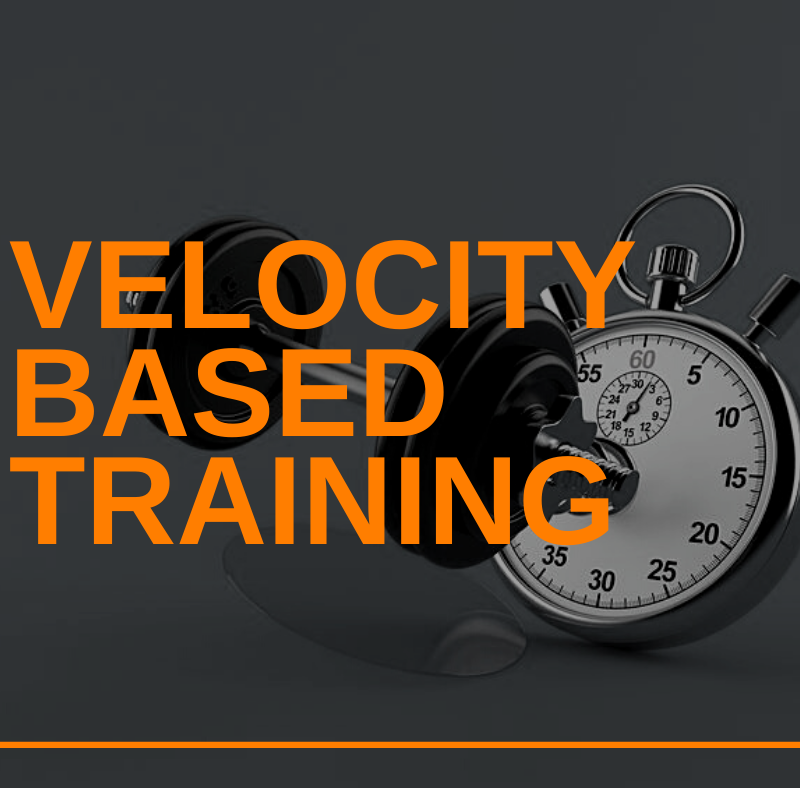
Velocity based training is a valuable tool for fitness professionals and advanced athletes seeking that ever-changing competitive edge or to enhance workouts for our daily clientele. Learn how to incorporate this technique into your current training repertoire!
How Velocity Based Training Works
Velocity based training, or VBT, uses technology such as linear position transducers, laser optic devices, and wearable accelerometers to measure movement velocity, or simply how quickly a movement takes place, during an exercise. This provides the coach and athlete with information regarding exercise performance, enabling the coach to provide his client with highly specific feedback (e.g. “lift the barbell faster” or “go for a more explosive effort”).
Identifying Intensity and the 1-RM
When strength and conditioning coaches, personal trainers, physical therapists, and other fitness practitioners design resistance training programs, they often manipulate training variables such as intensity, volume, rest, frequency and tempo. While some of these assessments quantify easily, such as rest intervals between sets or recommended training frequency, other variables prove more challenging.
As a case in point, consider the following situation: If two identical athletes possessing the same strength abilities each performed a lift at 80% of a 1-rep max, but one only lifted the bar with maximal effort, could we consider the intensity of these lifts equivalent?
Absolutely not – the greater degree of intensity belongs to the athlete who lifted with maximal effort. But how to we determine maximal effort?
In order to accurately predict an athlete’s 1-RM, coaches can develop a load-velocity profile. By recording the client’s movement velocities at each load, the coach can observe the speed at which s/he can lift at any given percentage of 1-RM. Load-velocity profiling uses a series of repetitions to produce a force-velocity profile for any specific exercise.
Experts recommended measuring the mean velocity over 4-6 lifts, each lift heavier than the previous one, with loads ranging from 45% to 95% of 1-RM. The assessment ceases once the athlete hits failure. Coaches may need to remind the client to move the weight as quickly as possible during the concentric phase of the exercise, while also stressing the importance of maintaining near-perfect form.
Accounting for Daily Shifts in Strength
The “traditional” or “percentage-based” approach to calculating training intensity reflects the flaw of assuming that one’s strength remains the same from day to day. In truth, one’s strength capabilities vary greatly within an average training week, depending upon many external and internal factors. Fluctuations as large as 18% above and below the previous assessment can occur, translating into a potential variation of up to 36%– a significant difference!
Velocity-based training takes such daily fluctuations into consideration, thereby eliminating or at least decreasing these drastic variations. The coach can proceed to adjust that day’s training, in accordance with what he determines as the athlete’s “freshness/readiness” in terms of strength.
The Power of Observation and Verbal Feedback
While incorporating this technology into training significantly raises the results/coaching bar, experts strongly advise trainers not to develop reliance, which often leads to the risk of neglecting the more fundamental aspects of our industry. Numbers and data have a way of overwhelming one’s senses.
We must never lose sight of the importance of basic coaching aspects: observing technique, providing verbal cues/feedback, and the all-important building and maintaining of coach-athlete relationships. Staying mindful that technical devices may interfere with such processes enables coaches to remain mindful of their industry’s trusted values and tenets.
Limitations of Velocity Based Training
Velocity-based training is not necessarily and solely a method of improving dynamic strength at higher velocities. While the use of VBT devices points coaches in the direction of implementing higher velocity strength work, keep in mind that velocity-based training offers an objective method of evaluating intensity at a given movement in time. Unless a client requests training geared specifically toward participation in one-rep lift competitions, such as in Olympic Lifting, assessing the movement process as a whole provides a clearer path towards other fitness goals, as well as strength.
Pros and cons exist for each method of prescribing intensity when coaching for pure strength. The use of velocity, intensity, or subjective RPE comes down to preference and logistics. However, the auto-regulatory benefits of RPE without the flaws of subjective monitoring, in conjunction with advantage of easily assessing day-to-day strength changes, make VBT the top choice of training tools for an abundance of professionals.
Experiment on Yourself First
Before plunging headlong into prescribing training loads for athletes and clients, a coach might wish to implement these methods on himself and his personal workouts, allowing him to establish a strong comfort and confidence level prior to instructing clients.
References:
www.trainwithpush.com/blog/an-intro-to-velocity-based-training
https://pubmed.ncbi.nlm.nih.gov/21157389/
simplifaster.com/articles/velocity-based-training-options-strength/
www.scienceforsport.com/velocity-based-training/#:~:text=Velocity%20based%20training%20is%20simply,movement%20speed%20of%20the%20exercis







